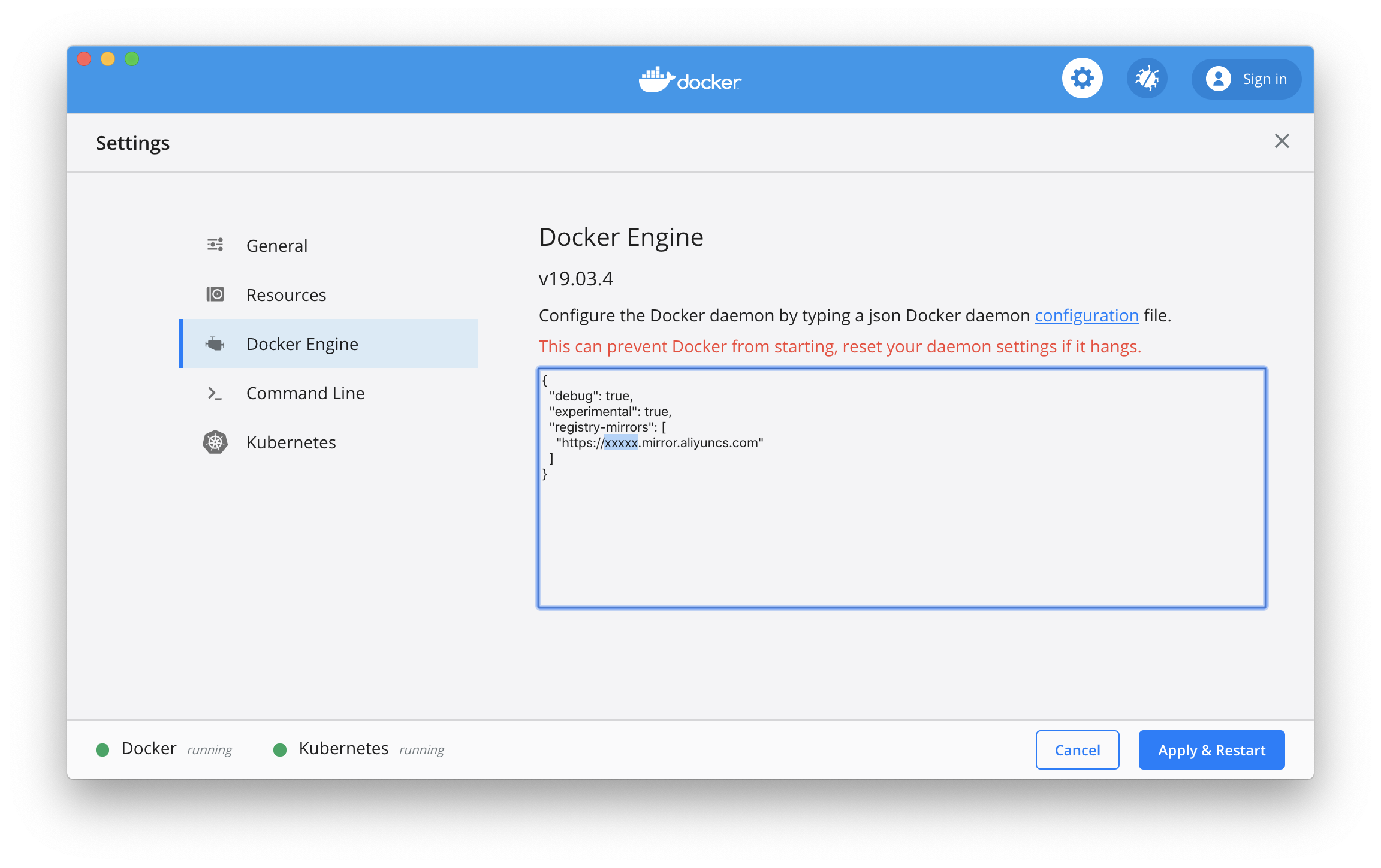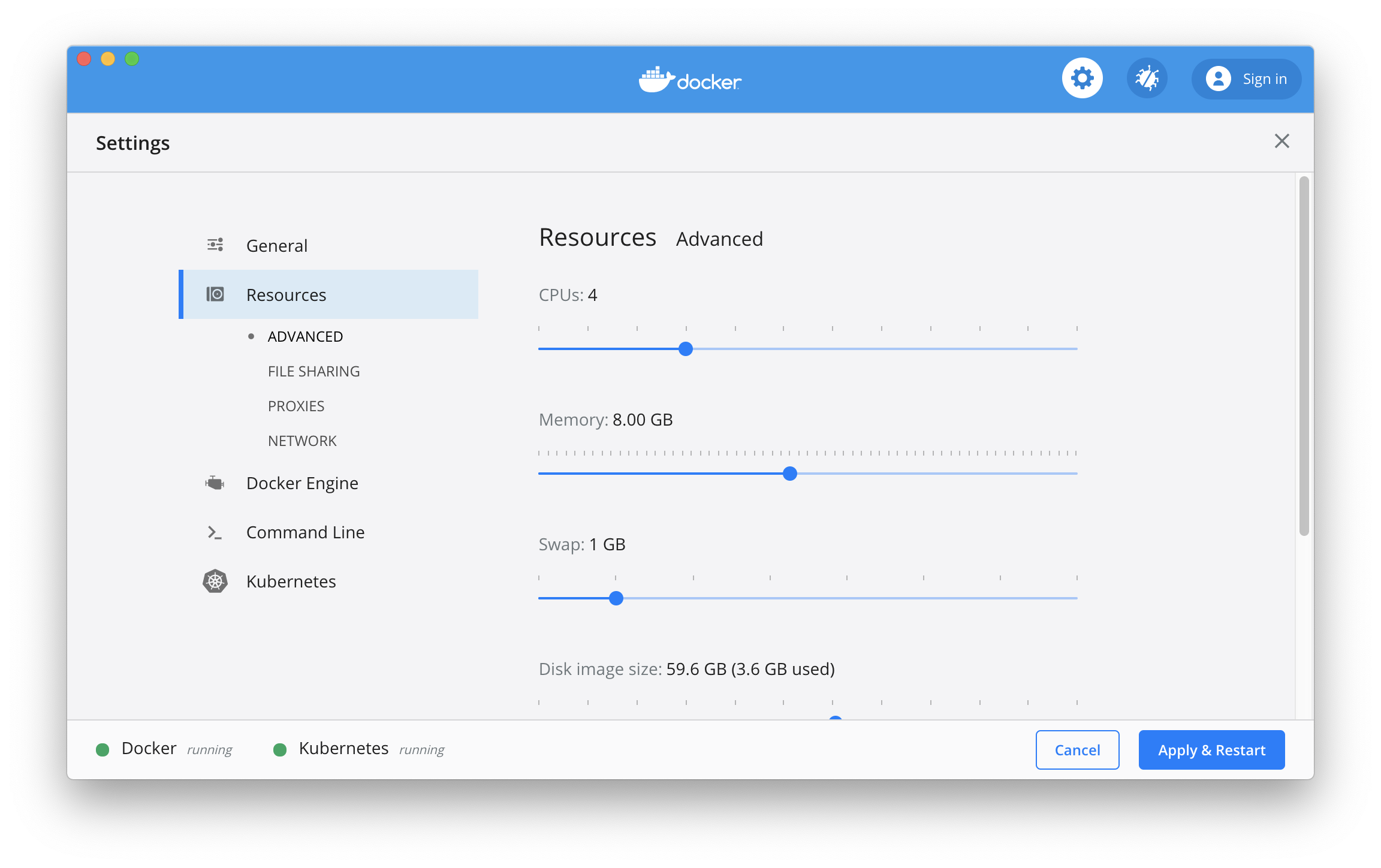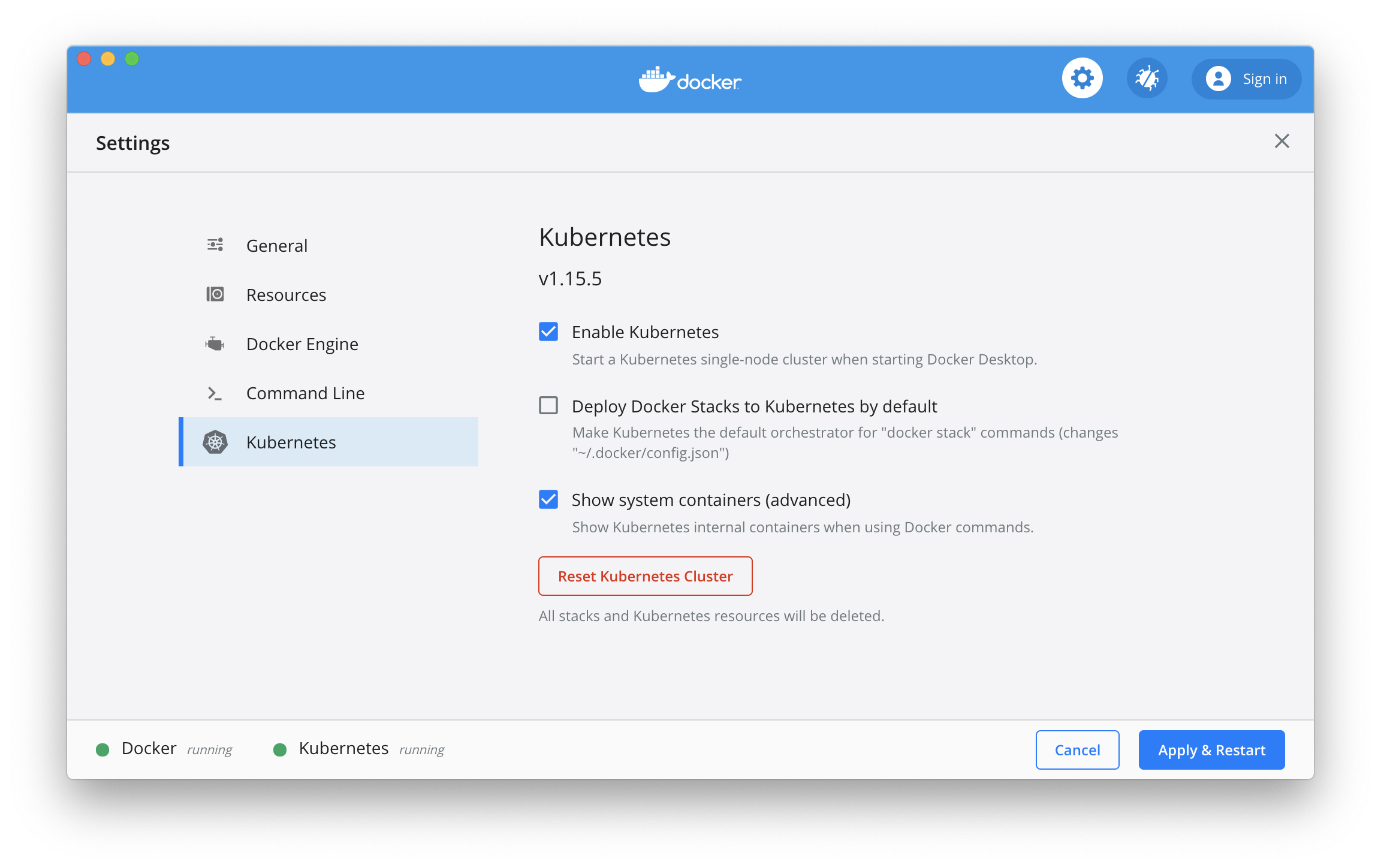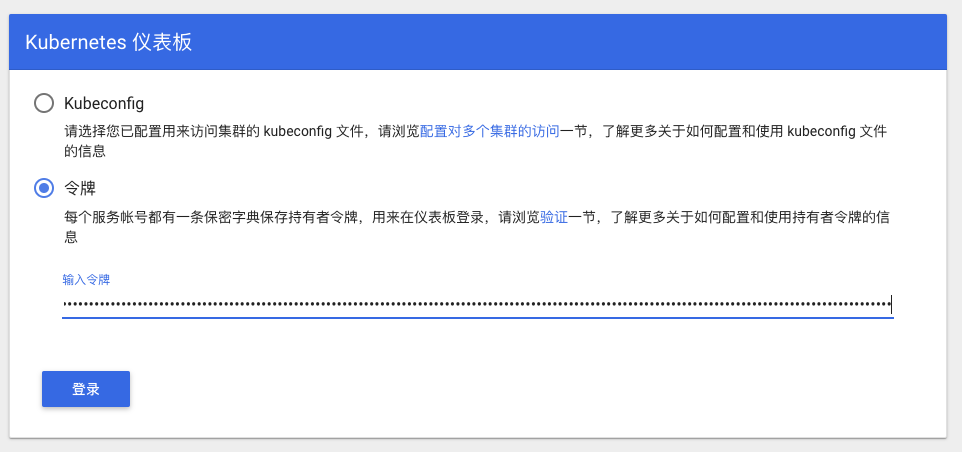6.0 KiB
Enable Kubernetes on Docker Desktop for Mac/Windows in China
中文 | English
NOTE:
- The master branch is tested with Docker Desktop for Mac/Windows version 2.2.2.0 Edge (with Docker CE 19.03.5 and Kubernetes 1.16.5).
- If you want to use with other version, pls check version of Kubernetes,Docker -> About Docker Desktop

- For Kubernetes v1.15.5, please use the v1.15.5 branch
git checkout v1.15.5 - For Kubernetes v1.15.4, please use the v1.15.4 branch
git checkout v1.15.4 - For Kubernetes v1.14.8, please use the v1.14.8 branch
git checkout v1.14.8 - For Kubernetes v1.14.7, please use the v1.14.7 branch
git checkout v1.14.7 - For Kubernetes v1.14.6, please use the v1.14.6 branch
git checkout v1.14.6 - For Kubernetes v1.14.3, please use the v1.14.3 branch
git checkout v1.14.3 - For Kubernetes v1.14.1, please use the v1.14.1 branch
git checkout v1.14.1 - For Kubernetes v1.13.0, please use the v1.13.0 branch
git checkout v1.13.0 - For Kubernetes v1.10.11, please use the v1.10.11 branch
git checkout v1.10.11
- For Kubernetes v1.15.5, please use the v1.15.5 branch
Enable Kubernetes on Docker Desktop
Config registry mirror for Docker daemon with https://docker.mirrors.ustc.edu.cn only if in China
Optional: config the CPU and memory for Kubernetes, 4GB RAM or more is suggested.
Preload Kubernetes images form Alibaba Cloud Registry Service, NOTE: you can modify the images.properties for your own images
On Mac, execute the following scripts
./load_images.sh
Or on Windows, execute the following scripts in PowerShell
.\load_images.ps1
NOTE: if you failed to start PowerShell scripts for security policy, please execute Set-ExecutionPolicy RemoteSigned command in PowerShell with "Run as administrator" option.
Enable Kubernetes, and wait a while for Kubernetes is running
Config Kubernetes
Optional: switch the context to docker-desktop (In the former version, the context is docker-for-desktop)
kubectl config use-context docker-desktop
Verify Kubernetes installation
kubectl cluster-info
kubectl get nodes
Deploy Kubernetes dashboard
Install Kubernetes dashboard
kubectl apply -f https://raw.githubusercontent.com/kubernetes/dashboard/v1.10.1/src/deploy/recommended/kubernetes-dashboard.yaml
or
kubectl create -f kubernetes-dashboard.yaml
Start proxy for API server
kubectl proxy
Access Kubernetes dashboard
Config Token for dashboard
For Mac
TOKEN=$(kubectl -n kube-system describe secret default| awk '$1=="token:"{print $2}')
kubectl config set-credentials docker-for-desktop --token="${TOKEN}"
echo $TOKEN
For Windows
$TOKEN=((kubectl -n kube-system describe secret default | Select-String "token:") -split " +")[1]
kubectl config set-credentials docker-for-desktop --token="${TOKEN}"
echo $TOKEN
Login dashboard
Choose Token, and input the output from above result
Or, choose Kubeconfig, select file from below path:
Win: %UserProfile%\.kube\config
Mac: $HOME/.kube/config
Click login, go to Kubernetes Dashboard
Install Helm
Install helm following the instruction on https://helm.sh/docs/intro/install/
For Mac OS
# Use homebrew on Mac
brew install helm
# add helm repo
helm repo add stable http://mirror.azure.cn/kubernetes/charts/
# update charts repo
helm repo update
For Windows
# Use Chocolatey on Windows
# NOTE: please ensure you can access googleapis
choco install kubernetes-helm
# add helm repo
helm repo add stable http://mirror.azure.cn/kubernetes/charts/
# update charts repo
helm repo update
Setup Istio
More details can be found in https://istio.io/docs/setup/getting-started/
Download Istio 1.4.0 and install CLI
curl -L https://git.io/getLatestIstio | ISTIO_VERSION=1.4.0 sh -
cd istio-1.4.0/
export PATH=$PWD/bin:$PATH
In Windows, you can download the Istio manually, or copy getLatestIstio.ps1 to your Istio directory, and execute the script.
NOTE: It refer the scripts from community.
.\getLatestIstio.ps1
Install Istio
istioctl manifest apply --set profile=demo
Check status of istio release
kubectl get pods -n istio-system
Enable automatic sidecar injection for default namespace
kubectl label namespace default istio-injection=enabled
kubectl get namespace -L istio-injection
Install Book Info sample
Please refer https://istio.io/docs/examples/bookinfo/
kubectl apply -f samples/bookinfo/platform/kube/bookinfo.yaml
Check the resources of sample application
kubectl get svc,pod
Confirm the application is running
kubectl exec -it $(kubectl get pod -l app=ratings -o jsonpath='{.items[0].metadata.name}') -c ratings -- curl productpage:9080/productpage | grep -o "<title>.*</title>"
Create Ingress Gateway
kubectl apply -f samples/bookinfo/networking/bookinfo-gateway.yaml
Check Gateway status
kubectl get gateway
Confirm the application is accessible
export GATEWAY_URL=localhost:80
curl -s http://${GATEWAY_URL}/productpage | grep -o "<title>.*</title>"
Open with browser http://localhost/productpage
Confirm application is running
export GATEWAY_URL=localhost:80
curl -o /dev/null -s -w "%{http_code}\n" http://${GATEWAY_URL}/productpage
Cleanup sample application
samples/bookinfo/platform/kube/cleanup.sh
Delete Istio
istioctl manifest generate --set profile=demo | kubectl delete -f -



